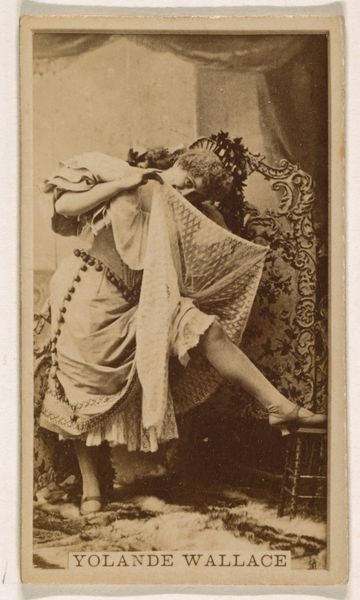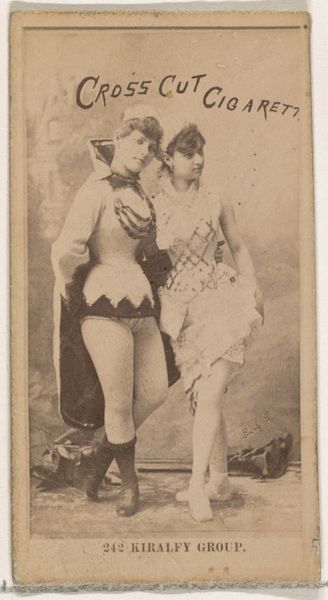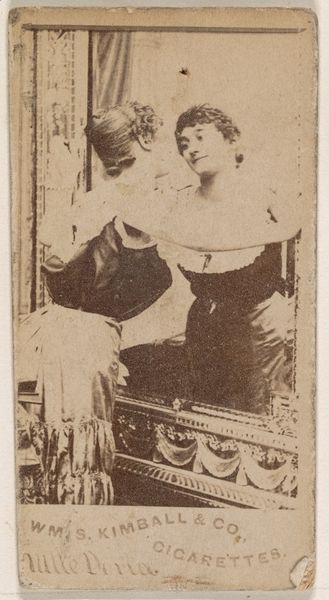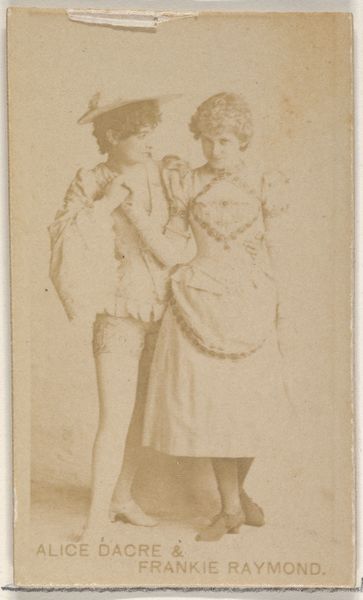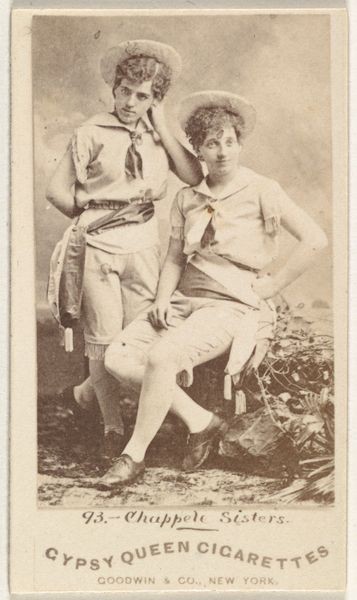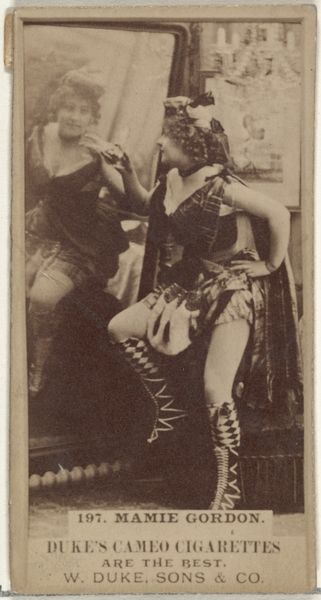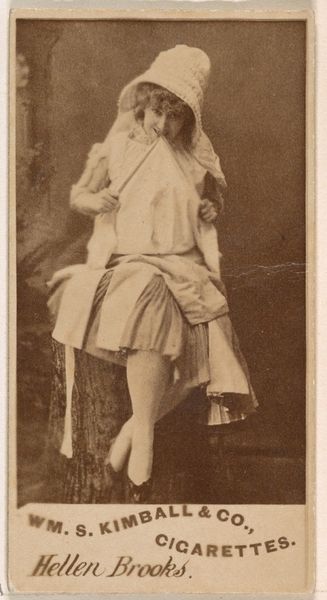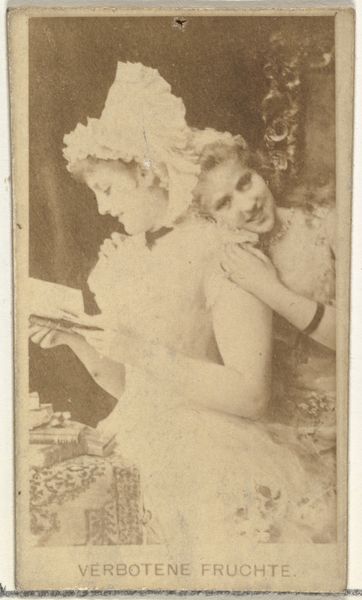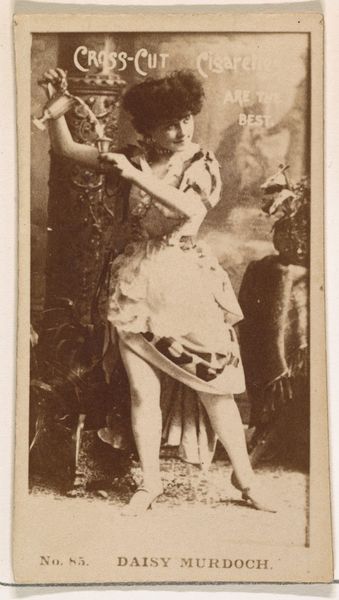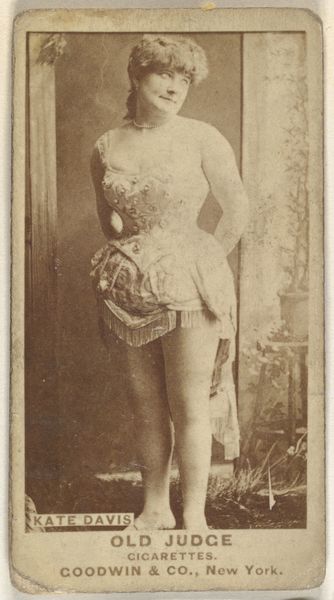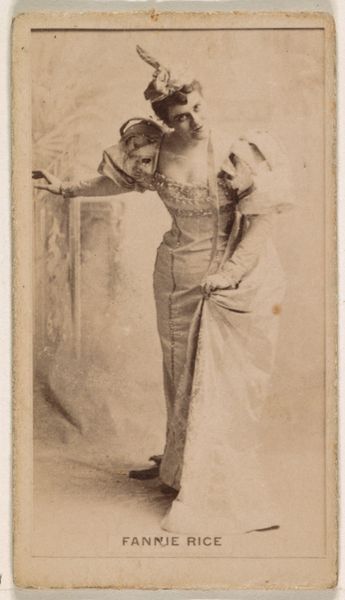
Alice Butler and Annie Boyd, from the Actors and Actresses series (N145-3) issued by Duke Sons & Co. to promote Cross Cut Cigarettes 1880s
0:00
0:00
Dimensions: Sheet: 2 11/16 × 1 3/8 in. (6.8 × 3.5 cm)
Copyright: Public Domain
Curator: Well, here's an intriguing piece. It's a trade card dating back to the 1880s, from the "Actors and Actresses" series (N145-3) produced by W. Duke, Sons & Co. to promote Cross Cut Cigarettes. It features portraits of Alice Butler and Annie Boyd. Editor: It feels… staged. Obviously, but even beyond that, the relationship between them seems so manufactured. I’m drawn to the very visible promotion of Cross Cut cigarettes here and its placement on the card; this really highlights that it is not an artwork created solely for aesthetics, it has commercial functions and intentions! Curator: Exactly. It's fascinating to consider the materiality of this little print. Trade cards like these were essentially ephemeral objects, churned out en masse. The photographic image reproduced through printmaking technologies to act as marketing material, ultimately becoming collectables. It speaks volumes about Victorian-era advertising strategies, which tapped into celebrity culture. Editor: How interesting, this all makes me think about who was included and who was excluded. These cigarette cards largely showcase white actors and actresses. That’s certainly reflective of power dynamics operating at the time, as well as ideas of celebrity. The card participates in those structures; it’s both reflecting and perpetuating those same inequities. Curator: Right, these images served to legitimize and elevate not just the actresses but also, implicitly, the product they advertised. These cards ended up circulating within and shaping popular taste in a tangible way, while creating labor opportunities in printing, photography, and advertising. The card represents a whole structure of industry in motion. Editor: Indeed, there’s a real interplay here. The cultural obsession with celebrity, as fueled by images like these, served to push the agenda of private companies; those with the power to fund publicity got to create the imagery of stardom. These actresses didn’t get to decide their narrative—their likeness became part of a marketing machine, where profit and consumerism ultimately determined its cultural imprint. Curator: Considering it, it shifts how I view photography from that time. Rather than straightforward, untouched glimpses of the period, there’s often a layer of commodification and manufactured appeal. Editor: Definitely food for thought about the images and narratives we continue to consume today.
Comments
No comments
Be the first to comment and join the conversation on the ultimate creative platform.
